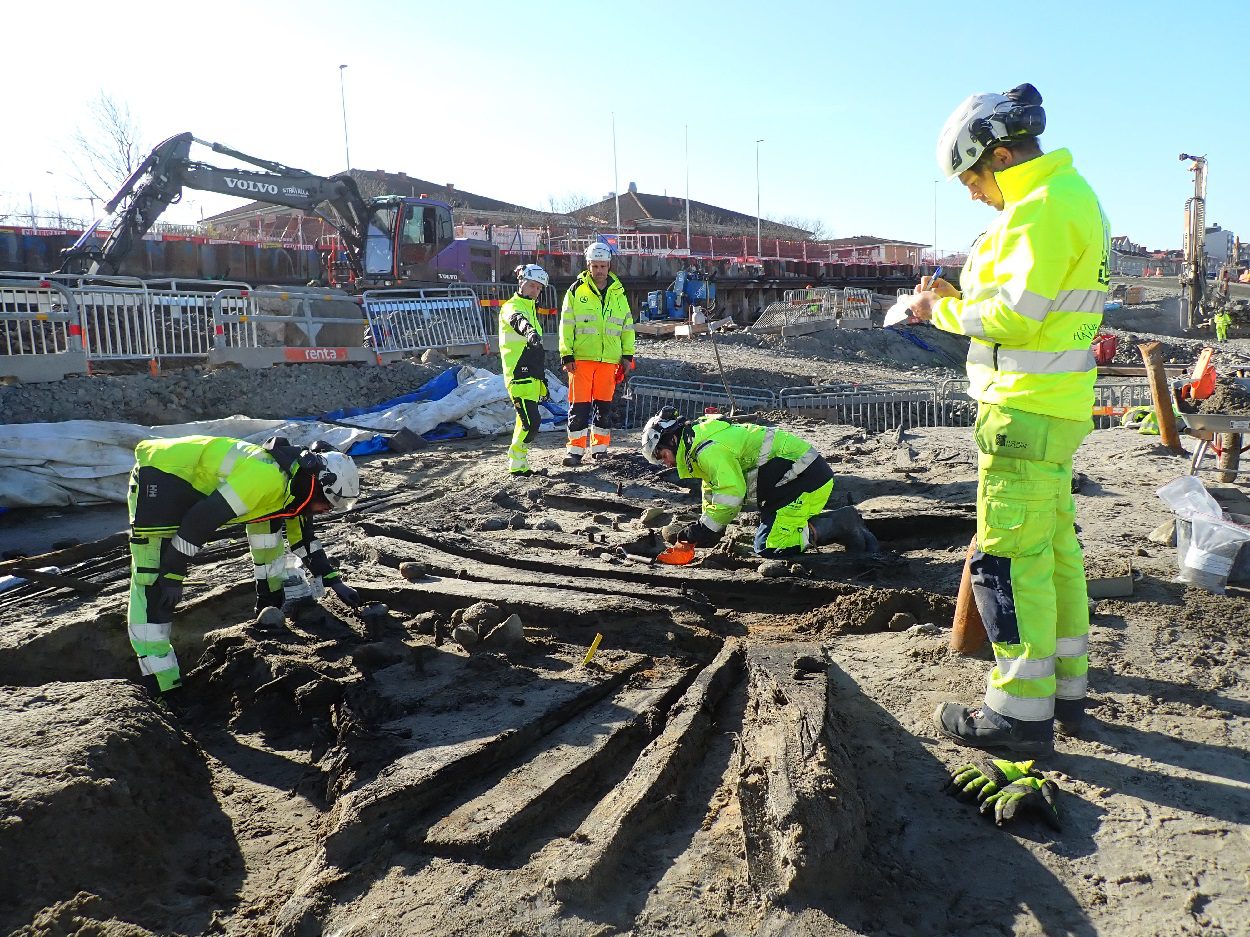ARCHAEOLOGISTS HAVE DISCOVERED TWO MEDIEVAL SHIPWRECKS FROM THE MID-14TH CENTURY DURING EXCAVATIONS IN VARBERG, SWEDEN.
The wrecks are merchant vessels known as cogs, a single-masted transport ship that first appeared during the 12th century on the Frisian coast, although the name “cog” is recorded as early as the 9th century.
Cogs progressively replaced Viking-type ships in northern waters during the 13th century, presumably as the ships could carry more cargo than the knarr of a similar size and were more stable due to their flat bottoms.
A dendrochronological study of one of the ships, indicates that the lumber used in its construction was felled after 1346 in the region that today consists of the Netherlands, Belgian, and north-eastern France, while the lumber from the second ship was felled between 1355 and 1357 in northern Poland.

Both ships use the traditional cog construction, where the bottom strakes of the vessels were built in the carvel style, while the sides are built in the more traditional clinker style. A closer examination reveals that the caulking between the strakes was made using moss, which was then secured with lathes.
Excavations have also unearthed barrel lids with the maker’s mark still carved in them, leather shoes, housewares made of wood and ceramic, and a cache or ship equipment and reserve parts buried beneath a pile of ballast stones.
Elisabet Schager, archaeologist and project leader of the excavation said: “Before these two wrecks were discovered, only 7 other cogs were known in Sweden, and only around 30 are known in the whole of Europe.”
The team have also collected soil samples for further analysis, where they hope to identify the remnants of food and/or cargo, and parasitic remains which could indicate whether animals were being transported onboard.
Although the ships were built outside of Scandinavia, the researchers are yet to determine what caused them to sink. “Once we have cleaned every timber from the wrecks, and critically analysed them, we will hopefully be able to get to the bottom of the mystery. The information we could gather from the initial excavation is that the larger ship had rolled on to its port side in shallow waters while it was still rigged”, says Schager.





